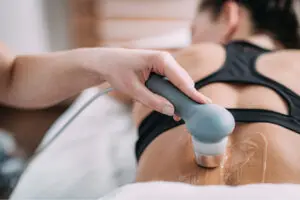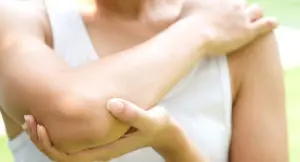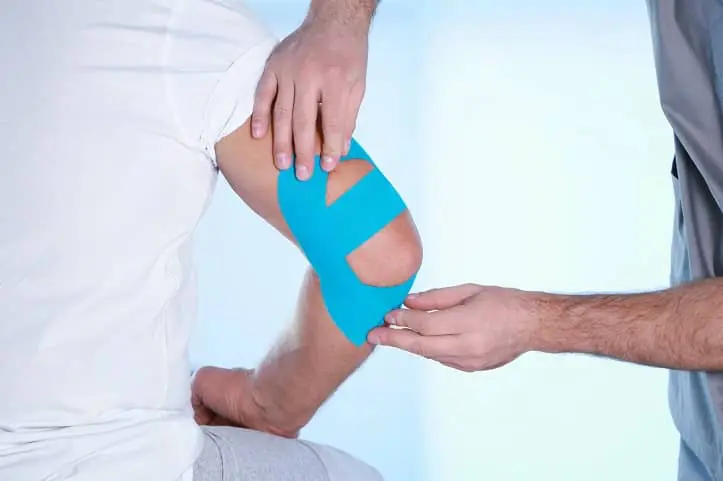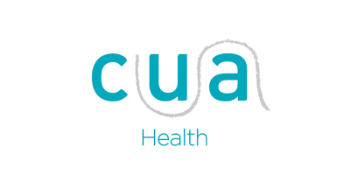Tendinitis treatment Brisbane – we have great weather for sports all year round – so we see loads of tendon irritation here at Knead Massage. Don’t waste your time and money getting endless treatment – book in for a myotherapy solution and live pain free.
Book your Tendinitis treatment
A Tendinopathy is an overuse injury to the structure that connects the muscle to the bone.
A tendon is made up of a substance called collagen. The collagen in a tendon has very low blood supply compared to the rest of the muscle – which means that any insult suffered by it – can take a long time to heal.
Tendinitis treatment Brisbane, How does a Tendon get injured?
Tendons are fibrous structures that connect muscle to bone.
Tendons are designed to withstand repetitive loading and store energy like a spring – but sometimes they are exposed to load that exceeds their capacity – they sustain small tears which normally heal, however significant over load can exceed the tendons ability to heal before the next instance of overload – and the tendon gradually degenerates and sensitizes until it starts to generate pain as a result of damage.
Tendons are designed to be stretched – too much compression can lead to inflammation.
The majority of tendinopathies are close to the joint (where the torsional forces are greater). These types of tendinopathies are called INSERTIONAL tendinopathies.
Other types of tendinopathies occur in the middle of the tendon (non-insertional)
Common sites of tendinopathy are the hip/leg , elbow, knee, ankle and shoulder. Tendinopathies appear to happen quickly – but are actually a result of a primary overloading incident (that the muscle is not conditioned to), followed by ongoing use.
Around 2010 the medical fraternity redefined tendon injury to the term Tendinopathy. Prior to that the type of tendon injury was referred to as Tendonitis (an inflammation of the tendon) or Tendinosis (a degradation of the cellular matrix/collagen of the tendon).
Tendinitis Treatment Brisbane Risk Factors
Age is usually a factor in the onset of tendinopathy.
- From the age of 30 – the tendons recuperative abilities begin slowing down and most people will have some non-painful tendinopathies. This is a normal part of aging.
- By the time someone is in their 50’s – they will often have significantly less responsive tendons that heal slowly.
- Hormonal changes occur – particularly in women during and after menopause which increase the likelihood of tendinopathy – especially shoulder and hip.
- Research indicates that cumulative micro trauma associated with compressive and tensile forces (such as sport or manual work) increase the likelihood of tendinopathy.
- Diabetics and people with a few extra kilos are at a higher risk of tendon irritation.
What does a Tendinopathy feel like?
Aggravated Tendinopathy usually causes pain and loss of strength to the affected region.
- Pain increases with tendon use.
- Pain and stiffness on arising.
- The tendon may hurt at night
- The region may be swollen, red, and hot feeling.
- The tendon feels “ropey” or “crunchy” when it is loaded
Tendinopathy almost always occurs in conjunction with Bursitis – an inflammatory condition – the area will usually feel hot and painful at times.
Book your Tendinitis treatment
How is a Tendon Injury Diagnosed?
Tendinopathy is usually very easy to diagnose.
A Remedial Massage Therapist or Myotherapist will assess you and ask you questions about how the pain started, your exercise habits and working situation.
They will perform special orthopaedic tests that will rule out other conditions and observe your function under load.
If the situation warrants it, they will refer you for an Ultrasound or MRI. Ultrasound is usually the best tool to establish the quality of the tendon and the Bursa.
How do you treat a Tendinopathy?
- avoid any activity that increases the pain.
- Apply ice or cold packs for 10 minutes at a time – up to twice an hour – for the first three days.
- Have your biomechanics assessed by a Myotherapist or Remedial Massage Therapist
- Undertake an Isometric Strength Program for the affected region. Isometric contractions of the muscle have been shown to reduce sensitivity and pain while increasing the capacity of the tendon.
Embrace a life of PAIN-FREE movement!
How long does it take a Tendinopathy to heal?
This will depend on how chronic the tendinopathy has become. If you have only been experiencing pain for a few days or weeks, it will usually settle quickly. Long term tendinopathies will take from 12-24 weeks to completely settle. If someone is diabetic, has a high body mass due to fat, or is older and generally inactive – it is best to assume at least 12 weeks.
Tendinitis Treatment Brisbane – Common Tendinopathies
- Achilles Tendon Rupture
- Achilles Tendonitis / Tendinitis
- Adductor Tendinopathy
- Bicep Tendonitis
- Carpal Tunnel Syndrome
- Greater Trochantic Syndrome (Gluteal Tendinopathy & bursitis)
- Golfers Elbow
- Patella Tendinopathy
- Peroneal Tendonitis
- Pes Anserinus Bursitis & Tendinitis
- Plantar fasciitis (Plantar fasciopathy)
- Rotator Cuff Tear
- RSI – Repetitive Strain Injury
- Shoulder Impingement (Sub Acromial Impingement)
- Swimmer’s Shoulder
- Tennis Elbow
- Tenosynovitis
Common Tendinopathy Treatments
- Immediate Assessment & Treatment
- Avoid irritating or causative activities
- Cold Laser Therapy
- Dry Needling
- Electro Needling
- Manual Therapy – Massage
- Scapular Stabilisation Exercises
- Gait Analysis
- Biomechanical Assessment
- Isometric Strengthening
- Proprioception Exercises
- Agility training
- Soft Tissue Massage
- Joint Mobilisation Techniques
- Kinesiology Tape
- Neuro-dynamics
- Running Analysis
- Strength Training
- Stretching
Related Posts

Low level laser therapy

Tennis Elbow Treatment Brisbane
https://jeo-esska.springeropen.com/articles/10.1186/s40634-017-0092-6
https://pdfs.semanticscholar.org/a80e/daff80617158afed1acbf4d791a7876c7b4c.pdf
https://www.ncbi.nlm.nih.gov/pmc/articles/PMC4482821/
http://citeseerx.ist.psu.edu/viewdoc/download?doi=10.1.1.832.4735&rep=rep1&type=pdf
http://bjsm.bmj.com/content/early/2015/09/25/bjsports-2015-095215
http://bjsm.bmj.com/content/49/19/1277?cited-by=yes&legid=bjsports%3B49%2F19%2F1277
http://photobiology.info/Hamblin.html

Roger Morelli


Latest posts by Roger Morelli (see all)
- Lymphatic Drainage Massage Benefits - October 18th, 2024
- Lymphatic Compression Pump Therapy Brisbane - October 16th, 2024
- Lymphoedema Brisbane - October 14th, 2024












